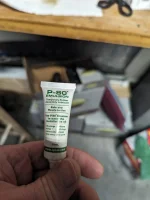For applications that don't need replacement often, I use these:
https://www.zoro.com/gates-shrink-clamp-12-in-min-dia-32915/i/G9123012/?
A link from a previous thread, my post:
"I have them on my LT1 96 Roadmaster wagon. Love them. Clean look, useful in tight places, no projections, no knuckle scrapping, conform to irregular shapes and grooved used hoses, no leaks after at least 10 years. Very nice with the restrictor and the tee on the heater hoses. Great with silicone hoses. Easy install, no special tool needed to remove."
https://www.zoro.com/gates-shrink-clamp-12-in-min-dia-32915/i/G9123012/?
A link from a previous thread, my post:
"I have them on my LT1 96 Roadmaster wagon. Love them. Clean look, useful in tight places, no projections, no knuckle scrapping, conform to irregular shapes and grooved used hoses, no leaks after at least 10 years. Very nice with the restrictor and the tee on the heater hoses. Great with silicone hoses. Easy install, no special tool needed to remove."
Last edited:

